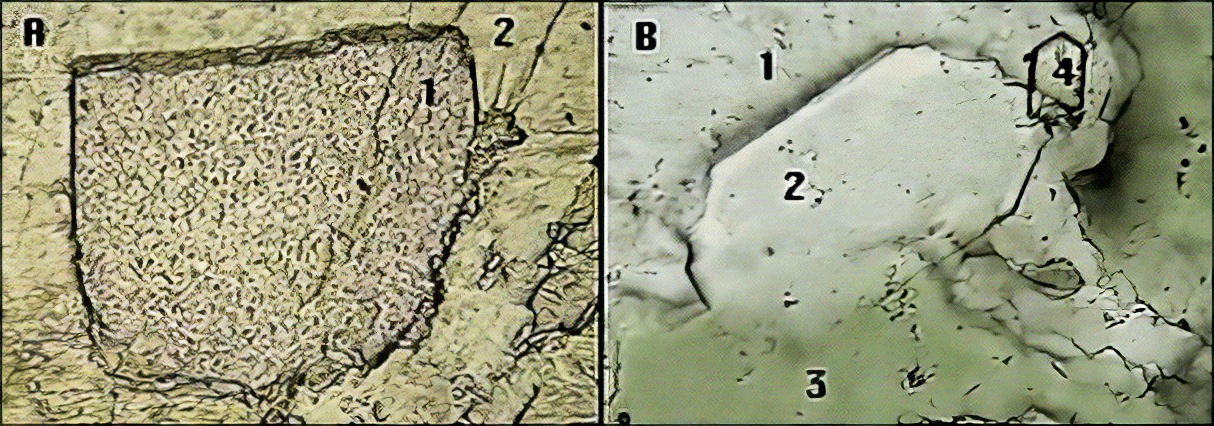1,51 - 1,54
1,54 - 1,64
1,54 - 1,68
1,54 - 2,00
Contact between two minerals also causes relief
The relief also originates from the contact between two minerals in the thin sections of rocks and soils (although the relief shown in this case is much less intense than that shown by the mineral grains on those screens given the lesser thickness of the thin sections of rocks and soils).
In the following image, in its part B, there is no relief between minerals 2 and 3. Mineral 4 shows a sharp relief in relation to mineral 1 and moderate in relation to 2, which in turn is low in comparison to mineral 1.

To evaluate the relief of a mineral in a thin section of rock or soil, it is necessary to know approximately the refractive index of the mineral that is in contact with it (we will look for contact with quartz, orthoclase, microcline, albite and oligoclase, which have indices of refraction very similar to the inclusion medium: 1.54). We have to look at several of its grains because the relief can be camouflaged for various reasons: 1 Due to the existence of very inclined edges (the real relief is only shown in vertical or almost vertical contacts); For example, in the previous image, grain 1 of part A shows a much greater apparent relief on its upper edge than it actually has (vertical edges and the horizontal one at the bottom). 2 If the edges are very thin, the relief of the mineral will appear weaker. 3 Due to substances adhering to the edges, either naturally or due to dirt originating in the process of making the thin sheet. 4 In intensely colored minerals the relief tends to appear higher.